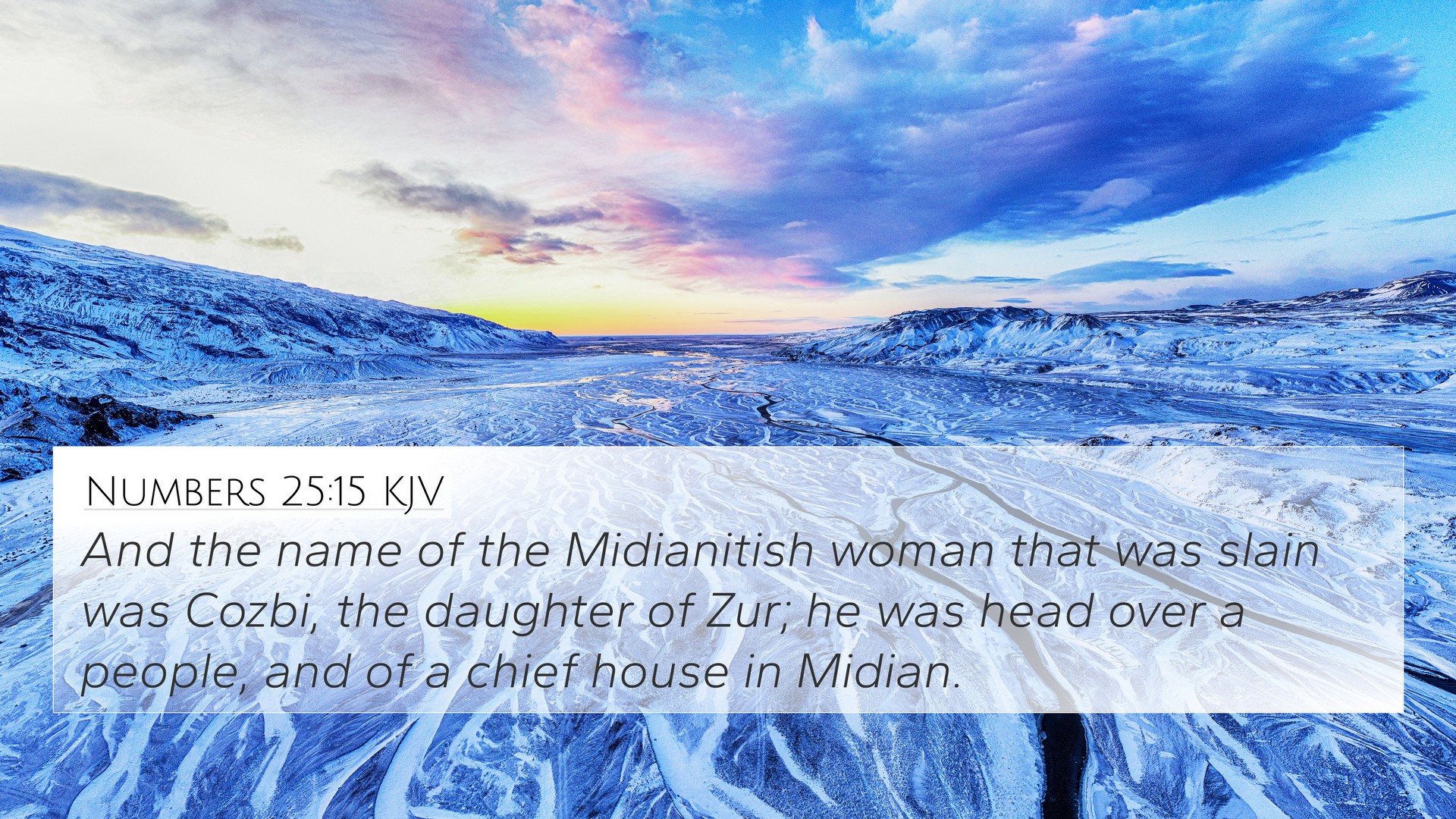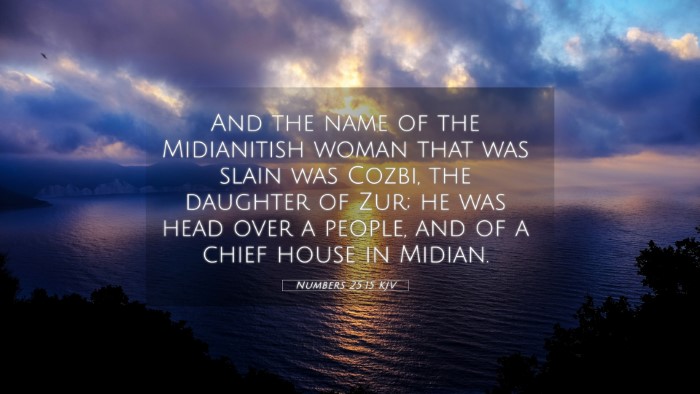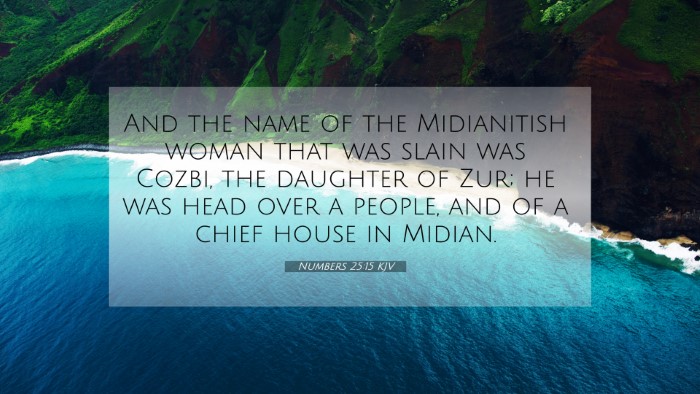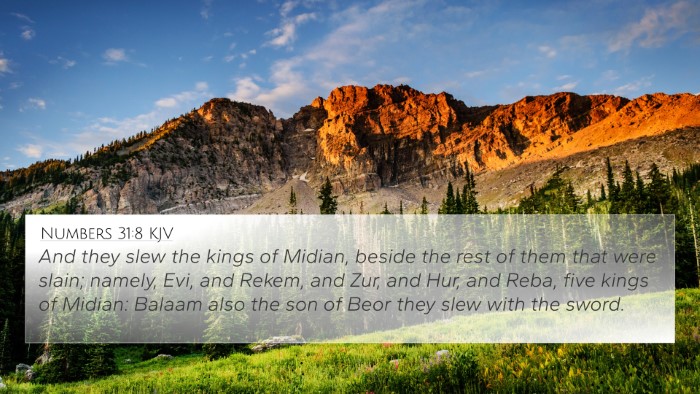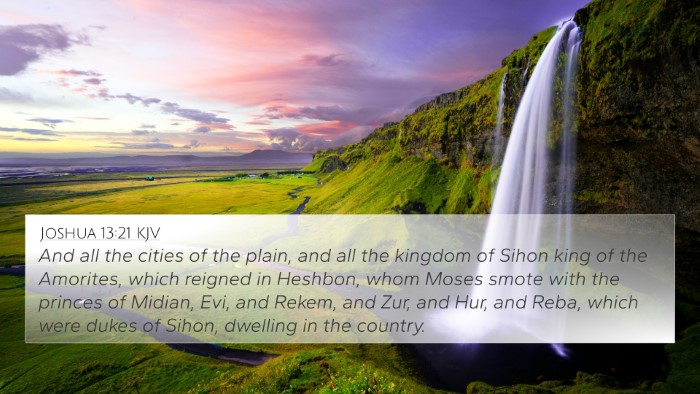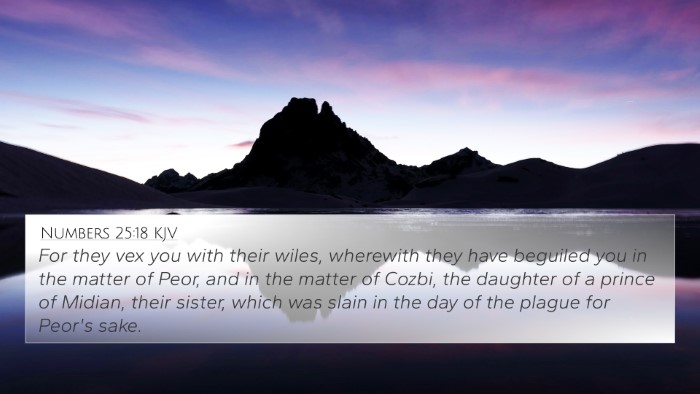Understanding Numbers 25:15
Numbers 25:15 states, "The name of the Midianite woman who was killed was Cozbi, daughter of Zur; he was the chief of the people of a Midianite clan." This verse concludes a dark narrative in the Book of Numbers, where the Israelites faced severe consequences for their infidelity towards God. In this commentary, we will explore the meaning and implications of this verse by drawing insights from renowned public domain commentaries.
Contextual Background
This verse concludes the account of Phinehas and his zealous actions against sin among the Israelites. The backdrop is critical; following their encampment near Moab, many Israelites are led into idolatry and immorality through their entanglements with the Moabite and Midianite women. This transgression provokes God's anger, leading to a plague among the people.
Key Insights from Commentaries
- Matthew Henry: Henry emphasizes the gravity of the Israelites' sin as it represents rebellion against God. He points out that Cozbi, as a prominent figure among the Midianites, symbolizes the corrupting influence of foreign nations on Israel.
- Albert Barnes: Barnes notes the significance of naming Cozbi, suggesting that her identification serves as a warning to the Israelites about the consequences of their actions. He asserts that exposing the leaders of sin is essential for the community's moral integrity.
- Adam Clarke: Clarke highlights the familial connection, explaining that Zur's position as a leader reflects the seriousness of the matter, indicating that high-ranking individuals led others astray. Clarke’s commentary underscores how communal sin often has influential leaders behind it.
Thematic Connections
The themes illuminated in Numbers 25:15 bridge various biblical lessons regarding idolatry, leadership responsibility, and divine judgment. These themes resonate throughout the Scriptures, establishing crucial cross-references that deepen understanding.
Bible Cross-References
- Numbers 25:1-3: This passage illustrates the initiation of sin among the Israelites due to their interactions with Moabite women.
- Psalms 106:28-31: Reflects on the Israelites' engagement with Baal of Peor, providing insight into the outcomes of their infidelity.
- Revelation 2:14: Highlights how New Testament believers are warned against similar idolatrous practices reminiscent of those in Numbers.
- 1 Corinthians 10:8: Paul refers to the Israelites' infidelities as a cautionary tale to the church, emphasizing the importance of moral purity.
- Hebrews 10:26-31: Warns believers against willful sin after knowing the truth, correlating with the grave consequences faced by the Israelites.
- Ezekiel 23:14-21: Uses the imagery of harlotry to describe Israel’s unfaithfulness, paralleling the theme found in Numbers.
- James 4:4: States that friendship with the world is enmity against God, echoing the necessity of separation from sinful influences.
Inter-Biblical Dialogue
Numbers 25:15 illustrates the ongoing conversation between the Old Testament experiences of Israel and their implications for New Testament believers. This highlights the importance of understanding historical narratives and moral lessons that transcend time.
Tools for Bible Cross-Referencing
To explore the connections between Bible verses, various tools and resources are available:
- Bible Concordance: A valuable resource to find words and their occurrences throughout Scripture.
- Bible Cross-Reference Guide: Helps in identifying relational verses across books and chapters.
- Cross-reference Bible Study: A study method that incorporates parallel verses into analysis and application.
Conclusion
In conclusion, Numbers 25:15 serves not merely as a historical record but as a timeless lesson on the consequences of sin and the importance of fidelity to God. The identification of Cozbi and her lineage signifies the complications that arise from leading others into sin. Through comprehensive cross-referencing and thematic exploration, we can better understand the narrative and its lessons for contemporary believers.
